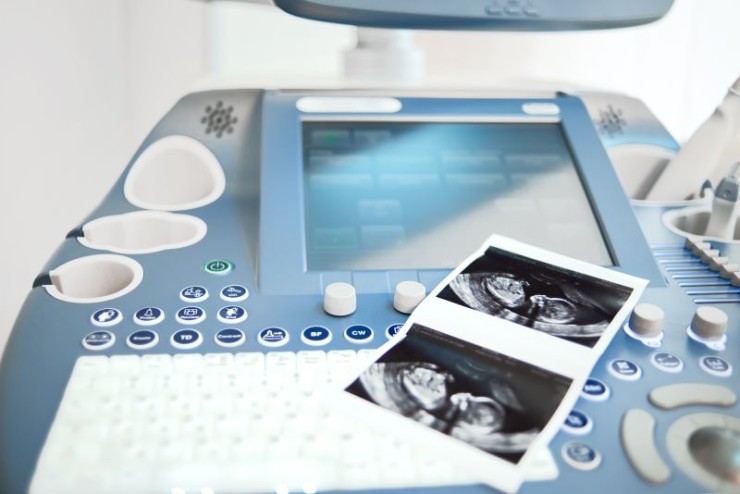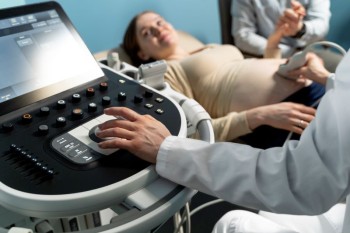
USG Small Parts or Soft Parts imaging is a branch of ultrasound that focuses on visualizing and evaluating soft tissues in specific areas of the body.
USG Small Parts or Soft Parts in India with Cost
USG Small Parts or Soft Parts in Detail: Navigating Precision in Tissue Imaging
Within the realm of diagnostic imaging, Ultrasound or USG (Ultrasonography) Small Parts, also referred to as Soft Parts, stands as a specialized technique dedicated to the meticulous examination of various soft tissues in the body. This comprehensive guide aims to elucidate the significance, procedure, and invaluable insights provided by USG Small Parts in achieving high-resolution imaging and diagnostic precision.
Introduction
USG Small Parts or Soft Parts imaging is a branch of ultrasound that focuses on visualizing and evaluating soft tissues in specific areas of the body. This technique is particularly valuable for assessing structures such as the thyroid, salivary glands, lymph nodes, and other soft tissue regions.
Understanding USG Small Parts Imaging
Unlike traditional ultrasound examinations that may encompass larger anatomical regions, USG Small Parts delves into the intricacies of specific soft tissues. It employs high-frequency sound waves to create detailed, real-time images, allowing healthcare providers to assess the texture, vascularity, and abnormalities within the targeted soft tissues.
Importance in Diagnostic Imaging
USG Small Parts imaging holds paramount importance in diagnosing a myriad of conditions affecting soft tissues. Its non-invasive nature, lack of ionizing radiation, and ability to provide real-time images make it a preferred choice for evaluating various small structures within the body.
Preparation for the Scan
Preparation for a USG Small Parts examination is generally minimal. Patients may be instructed to wear comfortable clothing, and specific preparations, if needed, will depend on the targeted area for imaging. The procedure is typically well-tolerated and does not require fasting or special dietary restrictions.
Procedure: Precision in
Soft Tissue Imaging
Patient Positioning: Depending on the targeted area, patients may be
positioned in a way that optimally exposes the soft tissue of interest.
Gel Application: A water-based gel is applied to
the skin over the targeted area, facilitating the transmission of sound waves
and ensuring optimal contact with the transducer.
Transducer Movements: The transducer,
a handheld device, is gently moved over the gel-coated skin, emitting and
receiving sound waves that create detailed images of the underlying soft
tissues.
Real-time Imaging: USG Small Parts
provides real-time imaging, enabling healthcare providers to observe
structures, blood flow, and any abnormalities in dynamic motion.
Assessment Areas in Soft
Tissue Imaging
USG Small Parts imaging is employed for detailed evaluations of various soft tissue regions, including:
Thyroid Gland: Assessing the thyroid for nodules,
cysts, or inflammation.
Salivary Glands: Detecting stones, tumors, or
infections within the salivary glands.
Lymph Nodes: Evaluating lymph nodes for size,
shape, and signs of inflammation or malignancy.
Soft Tissue Masses: Detecting and
characterizing masses or abnormalities in muscles or subcutaneous tissues.
Benefits of USG Small
Parts Imaging
High Resolution: Provides high-resolution images for detailed soft
tissue assessment.
Real-time Imaging: Allows for
dynamic observation of soft tissues during movement or compression.
Non-Invasive: Does not involve exposure to
ionizing radiation, making it a safe diagnostic tool.
Risks and Considerations
USG Small Parts imaging is generally considered safe, with minimal risks. It is crucial to have the scan performed by qualified and experienced sonographers to ensure accurate and reliable results.
Clinical Applications
The applications of USG Small Parts imaging span across various medical specialties, including:
Endocrinology: Assessing the thyroid gland for
thyroid disorders.
Oncology: Detecting and characterizing soft
tissue masses in cancer evaluations.
Rheumatology: Evaluating soft tissues for signs
of inflammation or joint-related conditions.
Expert Perspectives
Radiologists, endocrinologists, and specialists in relevant fields emphasize the precision and diagnostic value of USG Small Parts imaging. Their expertise ensures accurate interpretations and informed medical decisions.
Technological Advancements
Ongoing advancements in ultrasound technology contribute to the refinement of USG Small Parts imaging, enhancing image quality, and diagnostic capabilities.
Patient Experience
Patients generally find USG Small Parts imaging to be a comfortable and non-invasive procedure. The real-time imaging and absence of radiation exposure contribute to a positive and reassuring experience.
Conclusion
In conclusion, USG Small Parts or Soft Parts imaging emerges as a cornerstone in diagnostic precision, offering detailed insights into various soft tissues within the body. Its role in evaluating specific anatomical regions contributes to accurate diagnoses and informed medical interventions.
Frequently Asked Questions (FAQs) related to USG Small Parts or Soft
Parts imaging
Q: Is USG Small Parts imaging only used for diagnostic purposes?
A: While USG Small Parts is primarily employed for diagnostic evaluations, it can also guide certain medical procedures, such as fine-needle aspiration or biopsy, allowing for precise targeting of abnormalities within soft tissues.
Q: Are there any age restrictions for undergoing USG Small Parts imaging?
A: No, there are typically no age restrictions for USG Small Parts imaging. It can be safely performed on individuals of all ages, including infants, children, and adults.
Q: How long does a typical USG Small Parts imaging session last?
A: The duration of the imaging session can vary depending on the specific area being examined and the complexity of the evaluation. On average, a USG Small Parts session may take between 15 to 45 minutes.
Q: Are there any side effects or discomfort associated with USG Small Parts imaging?
A: USG Small Parts imaging is a non-invasive and generally well-tolerated procedure. Patients may experience mild discomfort due to the pressure of the transducer on the skin, but there are typically no significant side effects.
Q: Can USG Small Parts imaging be used to monitor the progression of a known medical condition over time?
A: Yes, USG Small Parts imaging is often utilized for longitudinal monitoring of conditions such as thyroid nodules, lymph node abnormalities, or soft tissue masses to track changes and guide ongoing medical management.
Q: Is USG Small Parts imaging safe for pregnant individuals?
A: Yes, USG Small Parts imaging is considered safe during pregnancy, as it does not involve ionizing radiation. However, it is essential to inform healthcare providers if you are pregnant or suspect pregnancy before undergoing any medical imaging.
Q: Can USG Small Parts imaging detect cancer in soft tissues?
A: Yes, USG Small Parts imaging can be instrumental in detecting suspicious lesions or masses within soft tissues. However, a definitive diagnosis may require additional tests, such as biopsy or further imaging modalities.
Q: Are there specific preparations required before a USG Small Parts imaging session?
A: In most cases, there are no extensive preparations. Patients may be asked to wear comfortable clothing, and specific instructions, if any, will be provided based on the targeted soft tissue area.
Q: How often should individuals undergo USG Small Parts imaging for routine health check-ups?
A: The frequency of USG Small Parts imaging depends on individual health conditions and medical recommendations. It is typically performed as needed based on specific symptoms, clinical indications, or follow-up assessments.
Q: Can USG Small Parts imaging identify abnormalities in the lymph nodes?
A: Yes, USG Small Parts imaging is adept at evaluating lymph nodes for size, shape, and signs of inflammation or malignancy. It plays a crucial role in assessing lymph node health in various medical contexts.
These FAQs aim to provide additional insights into the various aspects of USG Small Parts or Soft Parts imaging, addressing common questions that individuals may have about the procedure.
(0)
Login to continue



